Industry News
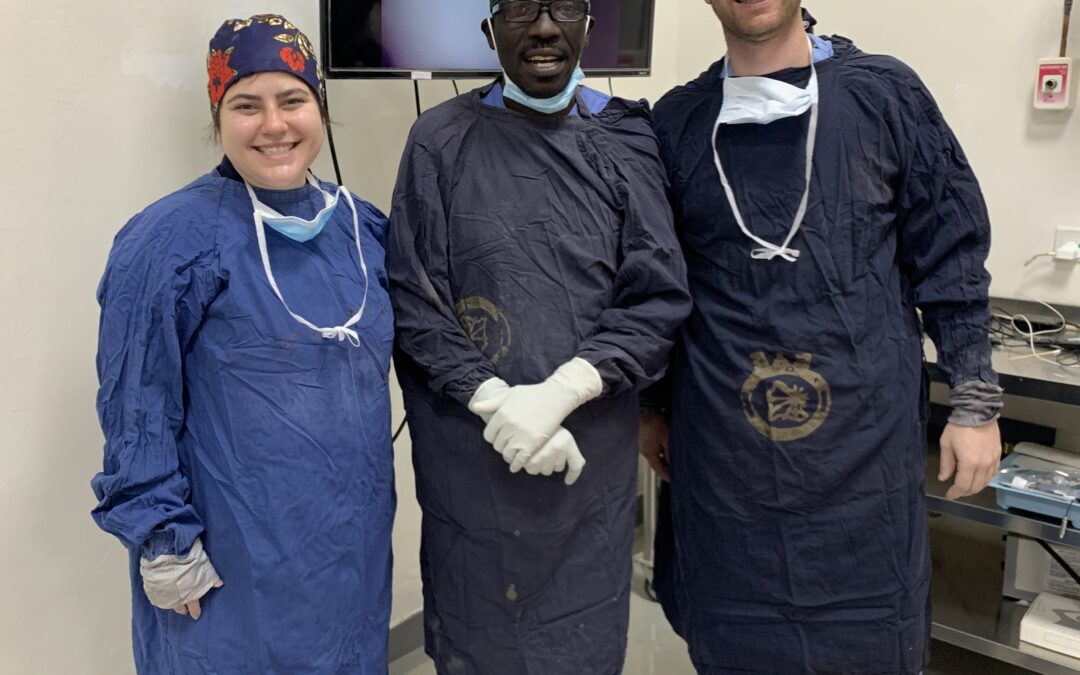
Visionary Journeys: A Cornea Surgeon’s Mission to Bring Vision to the World
At Saving Sight, our vision is to be the global partnership model for how eye banking and charitable vision services can most effectively serve people and communities. This standard we hold ourselves to has guided us to over 60 years of excellence in eye banking. We wouldn’t be able to change lives by Saving Sight without the support and dedication of our corneal surgeon partners. One corneal surgeon partner has a history of Saving Sight in the United States and globally.
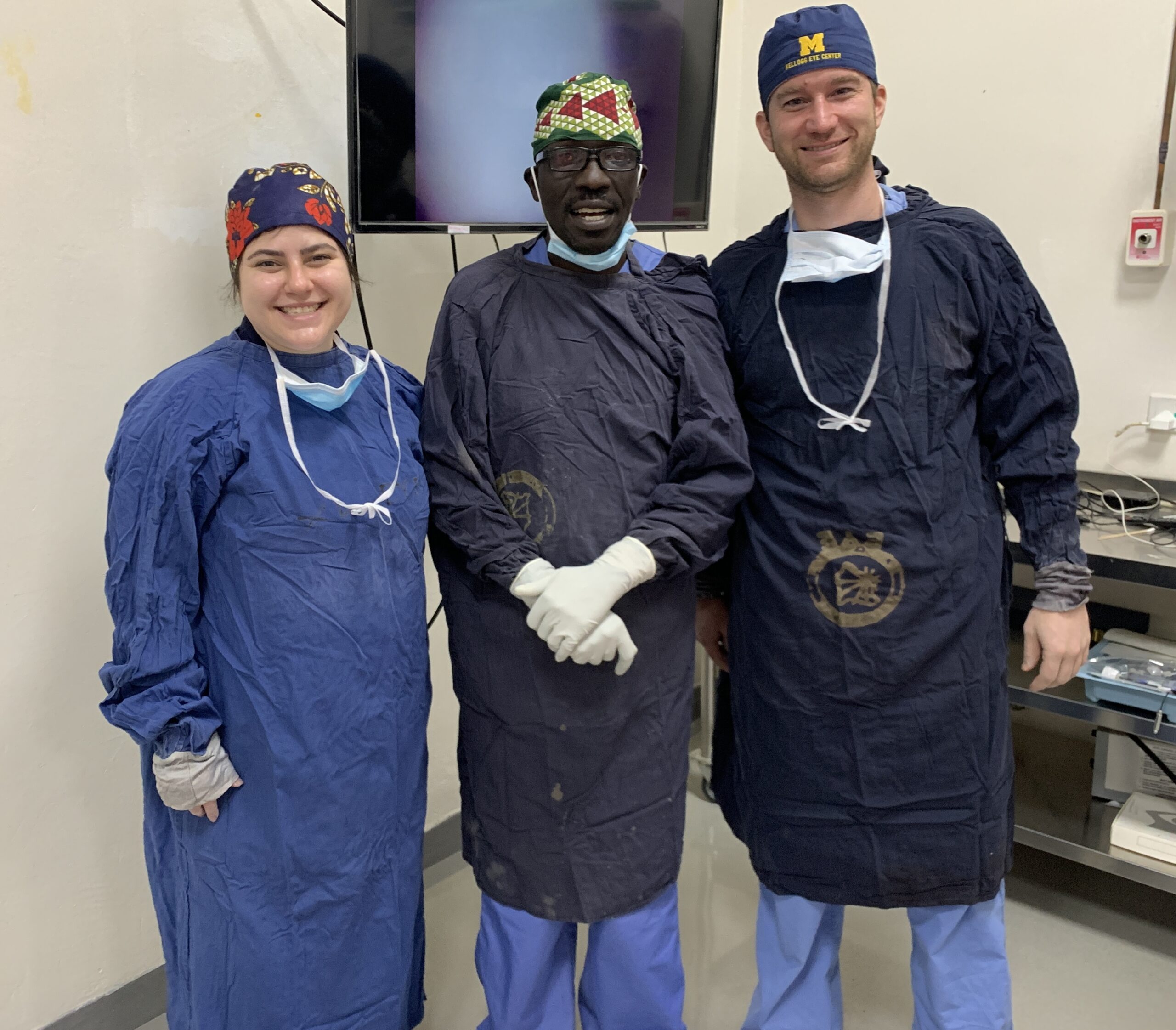
Sara Krachmalnick, Senior Ophthalmology Resident at KU, Dr. Ben Roberts, Ophthalmology Specialist at Tenwek Hospital in Kenya, and Dr. Miles Greenwald, Ophthalmology Specialist
Dr. Miles Greenwald started at the University of Kansas Medical Center in September 2023, focusing on corneal surgeries and comprehensive eye care. Before KU, Dr. Greenwald completed a one-year cornea fellowship before participating in a Global Ophthalmology Fellowship at the University of Michigan. The Global Ophthalmology Fellowships aims to build skills and relationships with different hospitals and clinics in the developing world. Often, there are fewer professionals, nurses, and technicians, and their resources are a lot less.
Dr. Greenwald spent seven months of that year traveling to different countries, working with the local ophthalmologists to determine how best to provide eye care. Dr. Greenwald spent time in India, Rwanda, Honduras, and two places in Kenya.
Just a few months ago, Greenwald traveled back to Kenya on a mission trip to save sight and teach and train the next generation of corneal surgeons. Coming out of the Global Ophthalmology Fellowship, he knew he wanted to work in an academic ophthalmology department, and that is what KU provided.
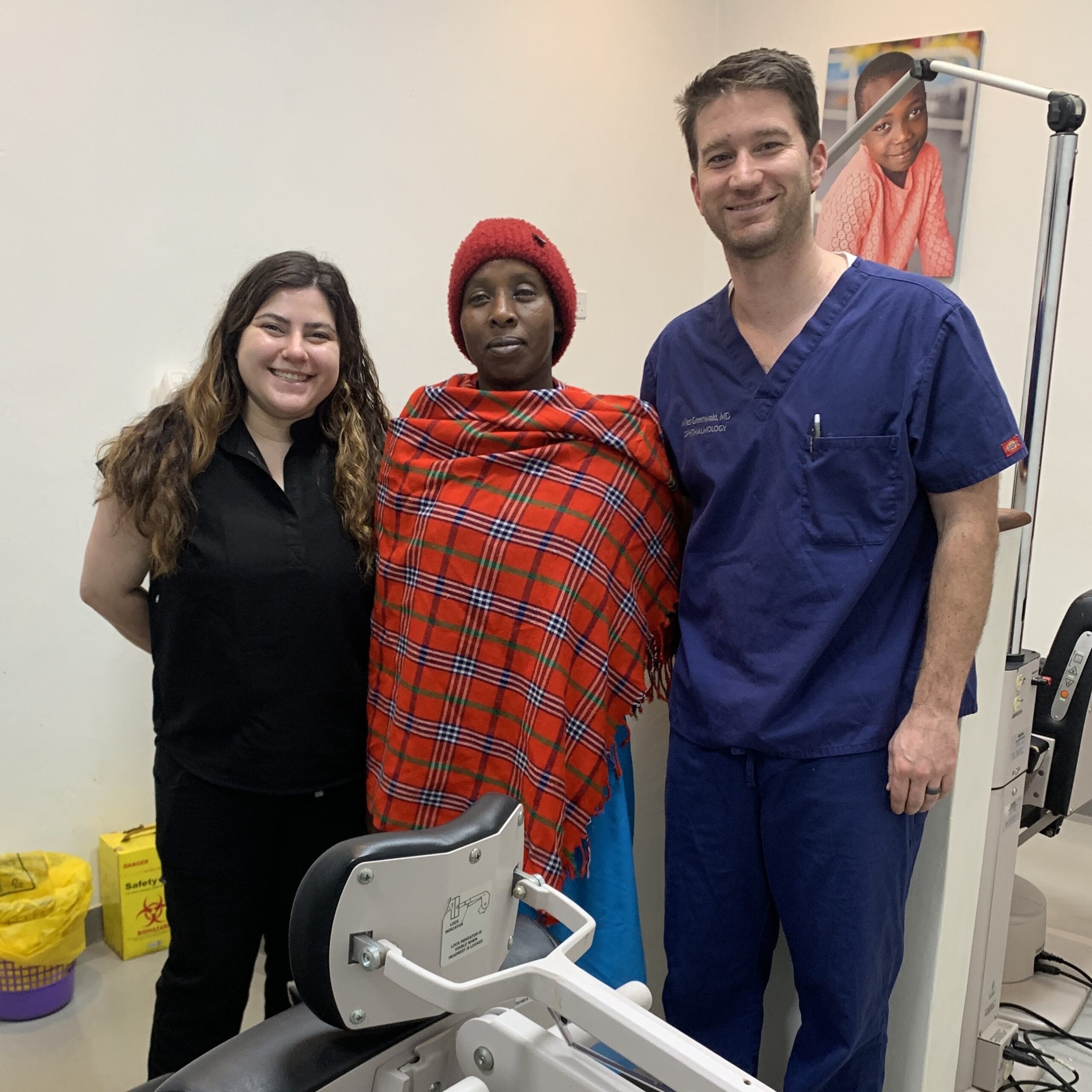
Sara Krachmalnick, Senior Ophthalmology Resident at KU, and Dr. Miles Greenwald, Ophthalmology Specialist
“I knew that I wanted to work with residents and medical students and be involved in training and teaching the next generation how to be good ophthalmologists and doctors. I’ve been very fortunate throughout my training to have learned from just amazing, amazing people and have mentors who have devoted so much to training me and helping me be the best that I can be. And so, I wanted to be involved in that as part of my career,” Greenwald said.
Before his trip, Greenwald connected with the ophthalmologist in Kenya and discussed what he could do and what the resident could do to be most helpful. The ophthalmologist said that people are on the waiting list for cornea transplants. After hearing this, Greenwald connected with Saving Sight to see how we could partner with him and save sight.
“Saving Sight was super supportive. They just said to tell us the details. How can we help logistically? How can we help get these patients taken care of? How many tissues would be helpful?” Greenwald said.
In a week, Greenwald and the team completed 12 corneal transplants with tissue provided by Saving Sight. Patients ranged in age from as young as 20 to patients in their 60s. “One of the crucial pieces for collaborations in corneal transplants is the lifelong care that is needed… I can trust Dr. Ben Roberts and his team at the eye hospital that when we do the surgery during that one time period, he and his team are there year-round and are able to care for the patients and do all the post-op care for the transplants,” Greenwald said.
Eye banking is something we take for granted here in the United States. Kenya only has one eye bank, which only processes a little tissue. It is difficult, if not impossible, for physicians in Kenya to get tissue from that eye bank.
“So, working with Saving Sight to have the tissues for the trip would be impossible without Saving Sights support. It makes it possible to restore vision for these patients and to try and give them their livelihood and their lives back,” Greenwald said.
Greenwald says the support he and other doctors within different specialties receive from leadership at KU has been invaluable in making his dream a reality.
“I’m excited for it to continue to build and become kind of a regular thing for the faculty and the residents to be involved in,” Greenwald said.
He plans a trip to Honduras, where he will work with a few ophthalmology surgical fellows, teaching them how to do some advanced surgeries, including corneal transplants and glaucoma surgery. The goal of his trip to Honduras is not for him to do another corneal transplant but to help the young surgeons learn how to do it for themselves.
Corneal blindness is a problem everywhere in the world. It’s estimated that about 4 million people worldwide are legally blind from corneal blindness.
“That number can be easily daunting, and I think we can get numb to it when there are statistics like that. Each of those people has a life dramatically affected by the lack of vision. Being able to partner with Saving Sight to do these surgeries and provide the appropriate follow-up care and post-operative management for each patient and to be able to help restore their sight and regain their life is rewarding.”
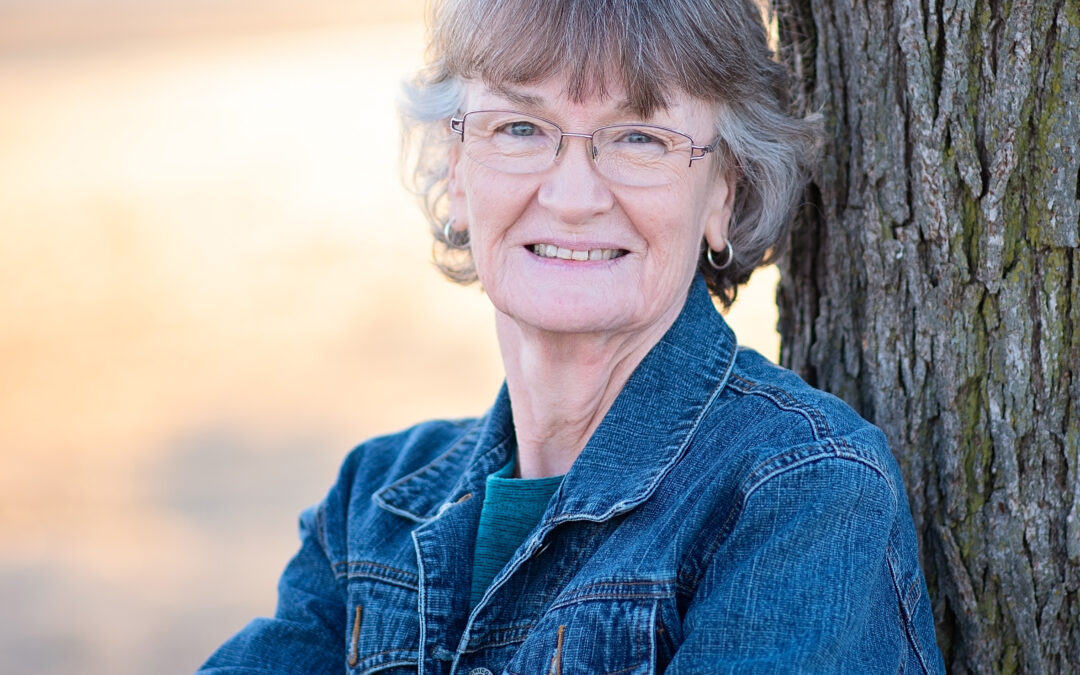
Kathy’s Journey of Restored Sight Through Transplantation
Kathy’s journey to restored sight began after her cataract surgery in the fall of 2023. The procedure that she expected would improve her vision did not deliver the results that she was expecting and led to the discovery of underlying vision issues.
“After my cataract surgery, everyone kept asking me, have you seen the bright lights? Have you seen the bright colors? And I was like…no,” Kathy recounted.
After surgery, swelling persisted in her cornea, and her physician, Dr. Ketcherside, explained that she had Fuchs corneal dystrophy. Fuchs dystrophy is a disease that affects the innermost layer of cells in the cornea. Oftentimes, it is not diagnosed until later in life, and many patients require a cornea transplant to restore clear vision. For Kathy, the answer to restored sight would be the gift of cornea donation and transplantation from two eye donors.
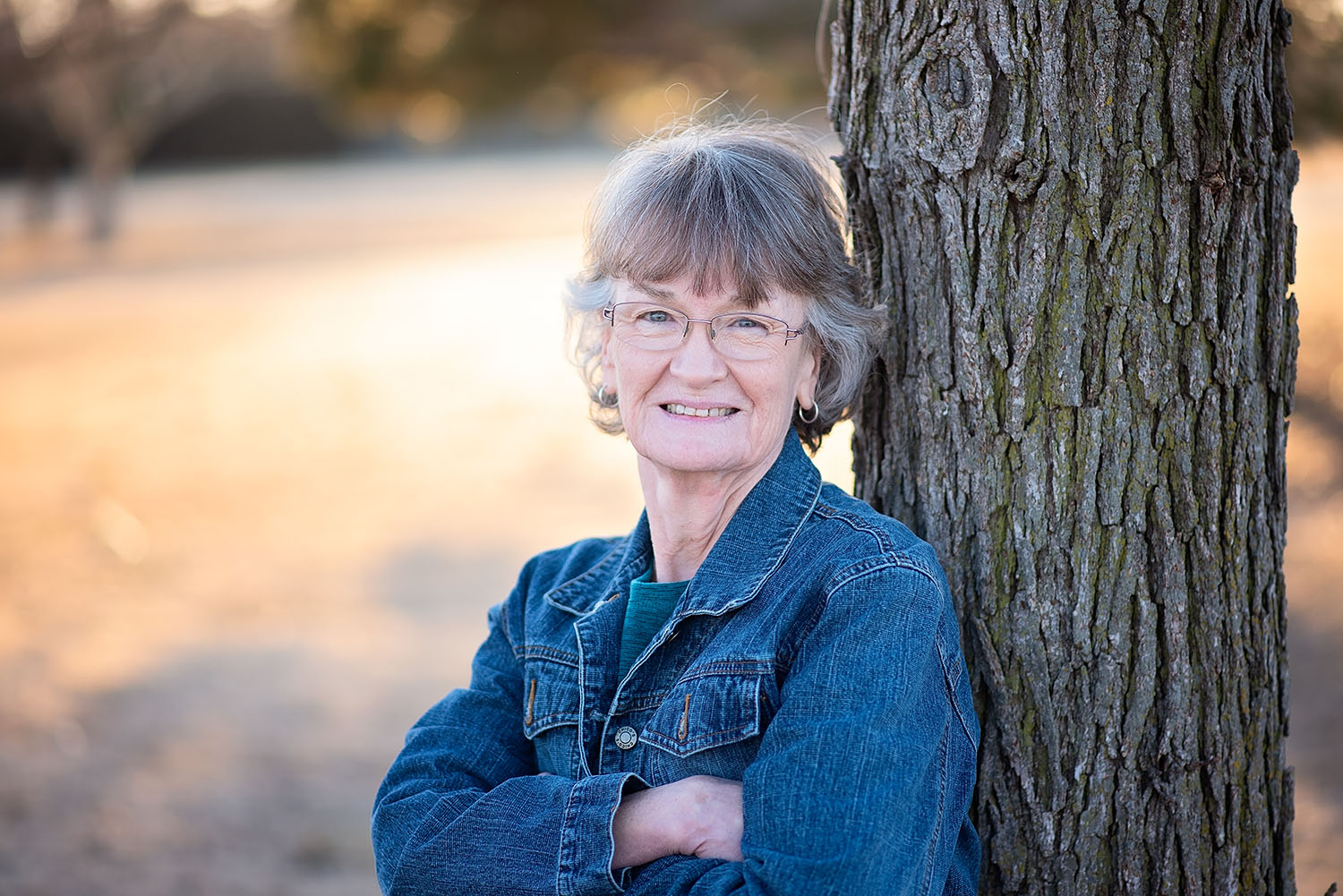
Kathy is so grateful for the gift of restored sight from her donors.
While Kathy was anxious about the surgery, Dr. Ketcherside explained the procedure, reassuring her that it was safe and generally successful. With a newfound sense of hope, Kathy received her first partial-thickness corneal transplant on her right eye in October and a second of the same type of transplant on her left eye in November. In a partial-thickness transplant, only a thin layer of cells that have stopped working in the recipient’s cornea are replaced with donor tissue. The result for many patients is a less invasive procedure, and quicker healing time.
When the stitches came out from her first transplant, Kathy experienced a remarkable change while watching television.
“All of a sudden, the black and whites were just brighter on the show we were watching on television,” said Kathy. “The other eye was more like looking through a light sepia color.”
Since receiving her transplants, Kathy has resumed hobbies like quilting and enjoys more daily independence. Before her surgeries, Kathy would rely on her husband, Steve, to read small print and drive. Now, she and Steve are back to some of their favorite time together, watching the night sky.
“My husband and I like to watch meteors,” said Kathy. “I was having trouble pinpointing the smaller stars and planets. After the transplant, we saw a big meteor at the same time, and it was a ‘woah’ moment.”
Kathy is grateful for the gifts of sight that her donors have given to her.
“It’s just been a miracle,” remarked Kathy. “It’s just opened up a whole new world.”

Unleashing Potential Through the Emerging Leaders Leadership Program
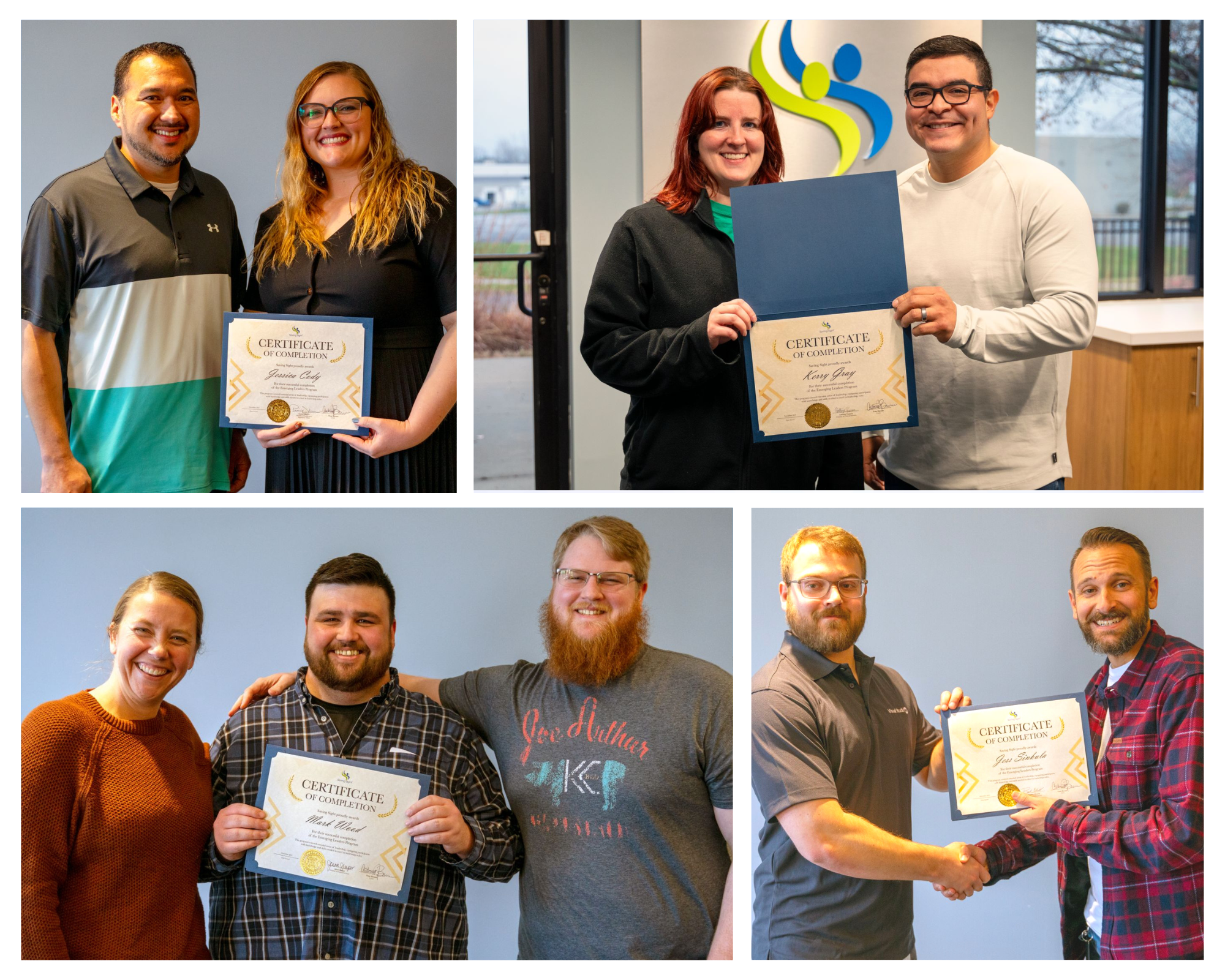
Emerging Leaders Graduates – Class of 2023
Just before the holiday season, the third Emerging Leaders class kicked off, with its participants eager to develop a wide variety of skills and knowledge. The Emerging Leaders Program is a 6-month development program that is intended to help prepare future Saving Sight leaders in the principles of leadership, strategy, and relational impact. During the program, participants will dive deep into topics such as leadership guiding principles, difficult conversations, data analytics, and communications, just to name a few.
This program is meant to develop future leaders, whether they are future leaders at Saving Sight or somewhere else down the road. The growth and development of new leaders are beneficial to everyone involved in Emerging Leaders. By focusing on leadership development, Saving Sight creates a culture that values learning and continuous improvement. Investing in leadership development ensures a pipeline of skilled and capable leaders. This, in turn, contributes to the overall success and sustainability of Saving Sight. Class participants gain new knowledge and skillsets while growing in their leadership abilities. Meanwhile, current leaders can share their experience and knowledge with emerging leaders, facilitating the transfer of institutional wisdom and organizational values. “It’s a rewarding experience, and I really enjoyed it. You’ll find that you’ll get out of it exactly what you put in,” says Mark Wood, a Client Services Specialist at Saving Sight and recent graduate of the Emerging Leaders Program.
While there were quite a few applications to the program, only a few were selected. A selection committee of current leaders at Saving Sight met and decided who would be in the third class of emerging leaders.
Bi-weekly sessions will immerse participants in a wide array of subjects, such as the Guiding Principles of Leadership, Time Management, and Emotional intelligence. Experts from the leadership team present their areas of expertise, sparking in-depth discussions.
The Emerging Leaders Program at Saving Sight stands as a catalyst for developing the leaders of tomorrow. As the third class starts its journey, the program’s focus on leadership principles, strategy, and relational impact provides a comprehensive foundation for future leaders. The commitment to continuous improvement and knowledge transfer between current and emerging leaders fosters a culture of growth within the organization. With bi-weekly sessions immersing participants in diverse subjects and hands-on experiences, the program ensures not only the growth of knowledge but also the practical application of leadership skills.
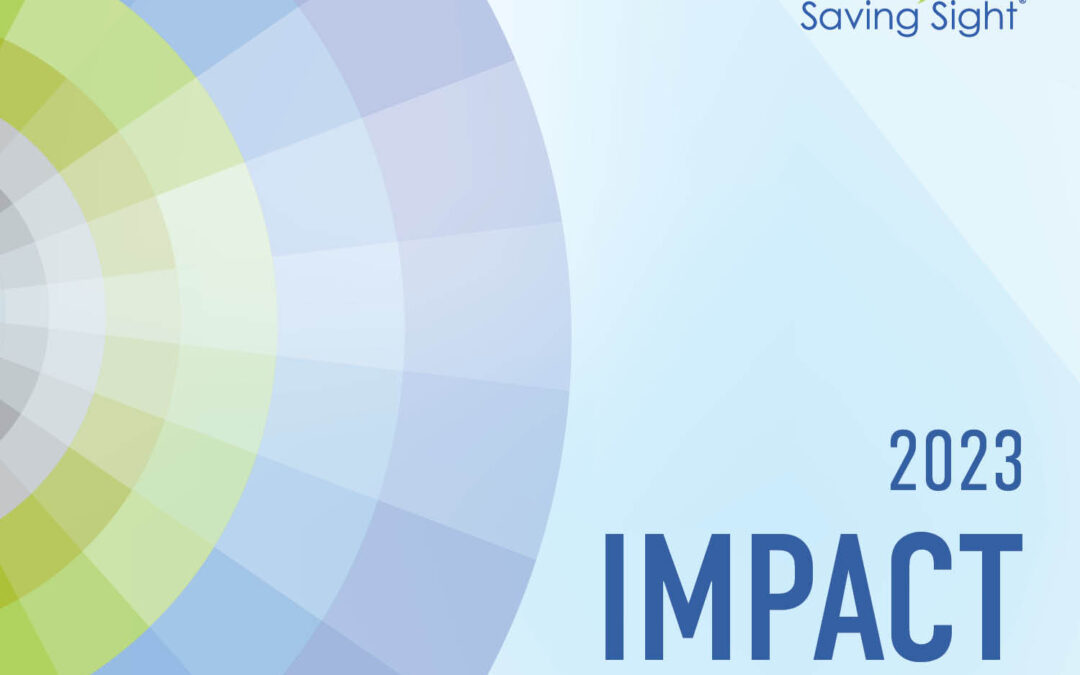
2023 Impact Report
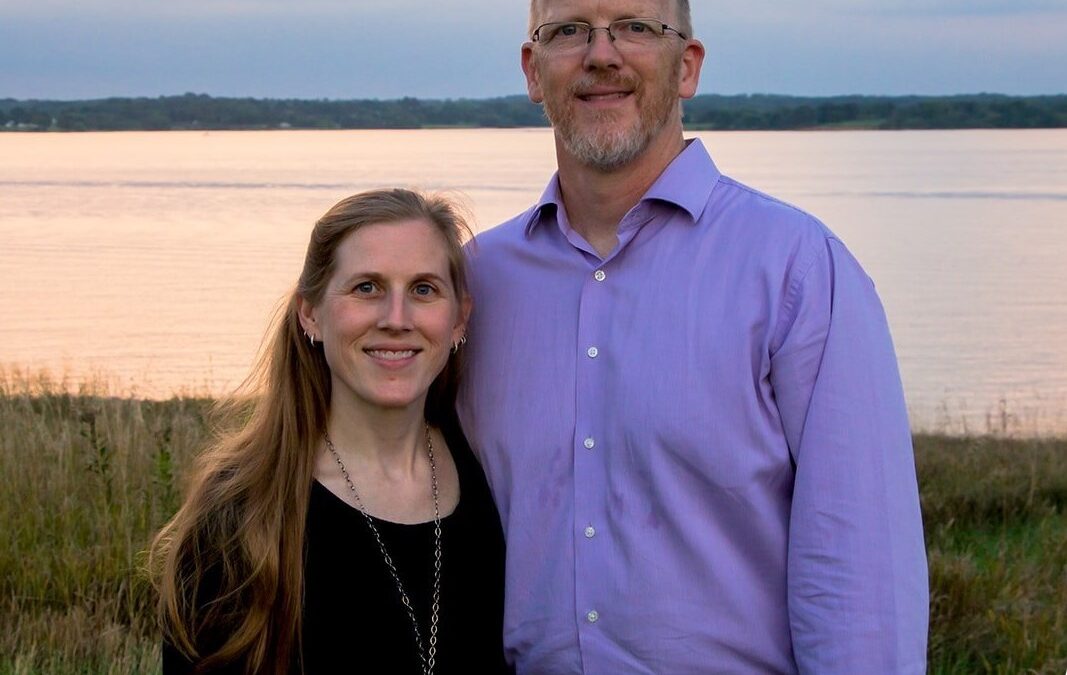
Transplant Recipient’s Vision Twice Renewed
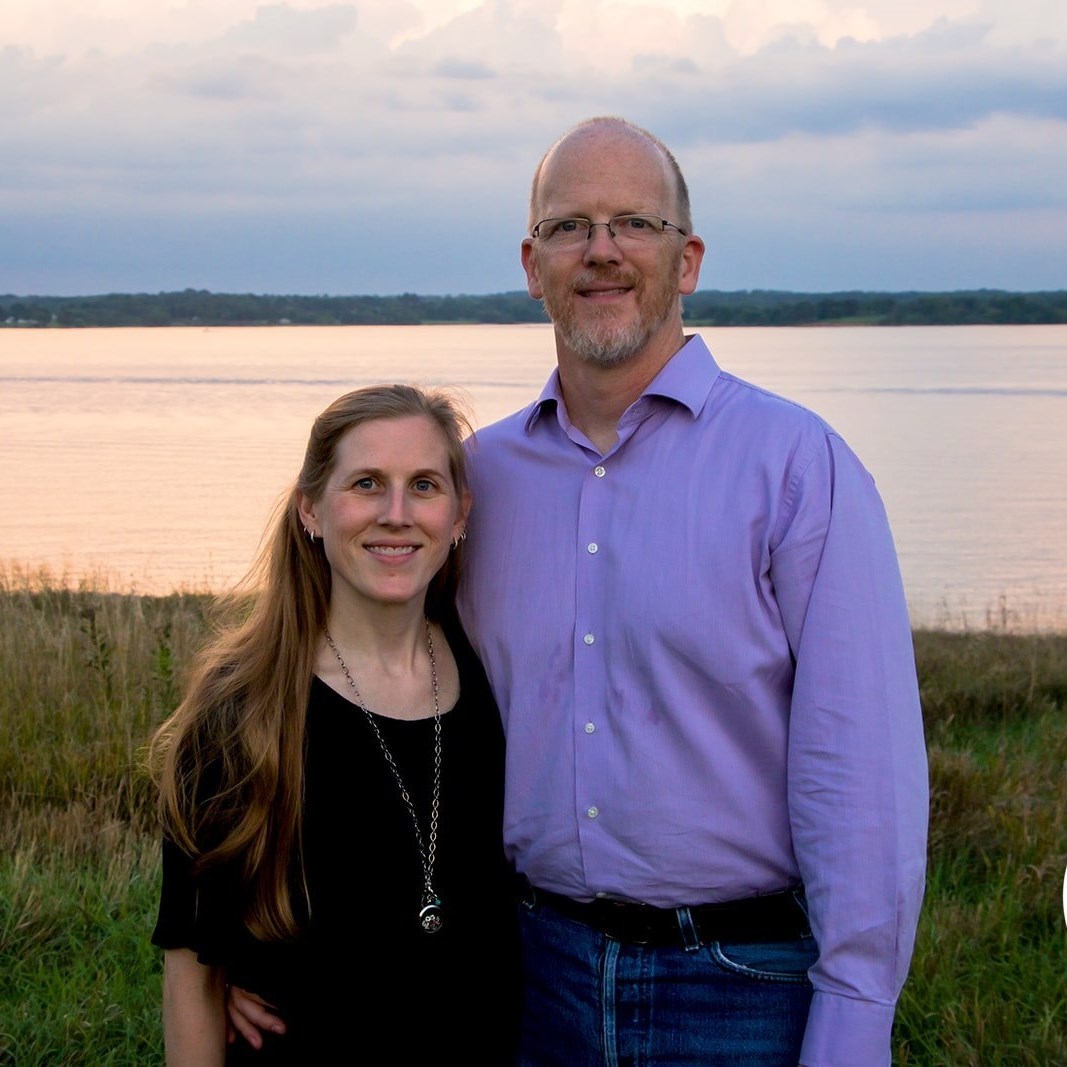
Scott pictured with his wife
Scott’s journey to restored vision began on a farm in central Kansas when he was 19. After unloading grain from storage bins, Scott noticed that his left eye had swollen shut. Scott eventually found his way to Dr. Bruce Grene in Wichita, Kansas where he was treated for bacterial infections, which offered some improvements. Shortly after that Scott was diagnosed with Acanthamoeba Keratitis, a rare infection of the eye. After the infection was treated Scott received his first cornea transplant. The surgery went smoothly, and Scott regained his vision, which remained stable for the next 20 years. Scott was on a tennis scholarship when he received his first cornea transplant, and he said, “The experience of going from playing sports to facing the uncertainty of vision loss had been nothing short of a rollercoaster ride.” Scott was able to see 20/20 uncorrected out of his left eye for nearly 20 years and for a few years after, his vision was corrected by glasses. Since the transplant, many of his optometrists have enjoyed the opportunity to work with his unique circumstances.
Life took an unexpected turn when Scott was involved in a car accident in January of 2023 that resulted in damage to the cornea, lens, and iris of his left eye. This accident led to an emergency cornea transplant performed by Dr. Farhat and his team in Kansas City. Scott praised the expertise of both Dr. Bruce Grene in Wichita and Dr. Farhat in Kansas City, highlighting the crucial roles they played in his journey to sight restoration, many years apart.
Scott’s story not only underscores the enduring human spirit but also the importance of organ, eye, and tissue donation. Scott emphasized the significance of having tissues readily available, contrasting the past when waiting was the norm and he expressed gratitude for the advances in medical science that allow him and countless others to see again.
“I have been the lucky one to have lost vision to both disease and trauma. I have also been fortunate enough to have had it restored via a transplant, and the prognosis is good that we will soon have it returned as I continue to heal from my second,” says Scott. Scott’s story highlights the impact of organ and tissue donation on saving lives and providing hope to individuals facing vision loss. As his journey continues, Scott remains an inspiring example of resilience.

The Importance of EBAA Accreditation

The accreditation process is meticulous and entails a comprehensive review of various aspects of eye bank operations, policies, and personnel. A distinctive feature of EBAA Accreditation is the involvement of a dedicated team comprising an experienced eye banker and a corneal surgeon. This team undertakes site visits every three years, evaluating donor records, standard operating procedures, tissue documentation, and administrative records. They observe tissue recovery and processing techniques, thus ensuring a comprehensive evaluation of the eye bank’s practices.
The inspection results are presented before the EBAA’s Accreditation Board, a group of seasoned professionals within the field. Their deliberations determine whether an eye bank earns accreditation, requires corrective action, or faces potential revocation of status. This rigorous evaluation underscores the significance of the EBAA Accreditation as an emblem of excellence, which directly impacts the safety and quality of the ocular tissues utilized in transplantation surgeries.
EBAA Accreditation signifies a commitment to safety and quality and an unwavering dedication to the well-being of patients. It establishes a standard of excellence that fortifies confidence among medical professionals and patients alike. By fostering consistent adherence to the highest medical standards, the accreditation program ensures the preservation of ocular tissue quality, elevating the pursuit of restoring vision through transplantation.
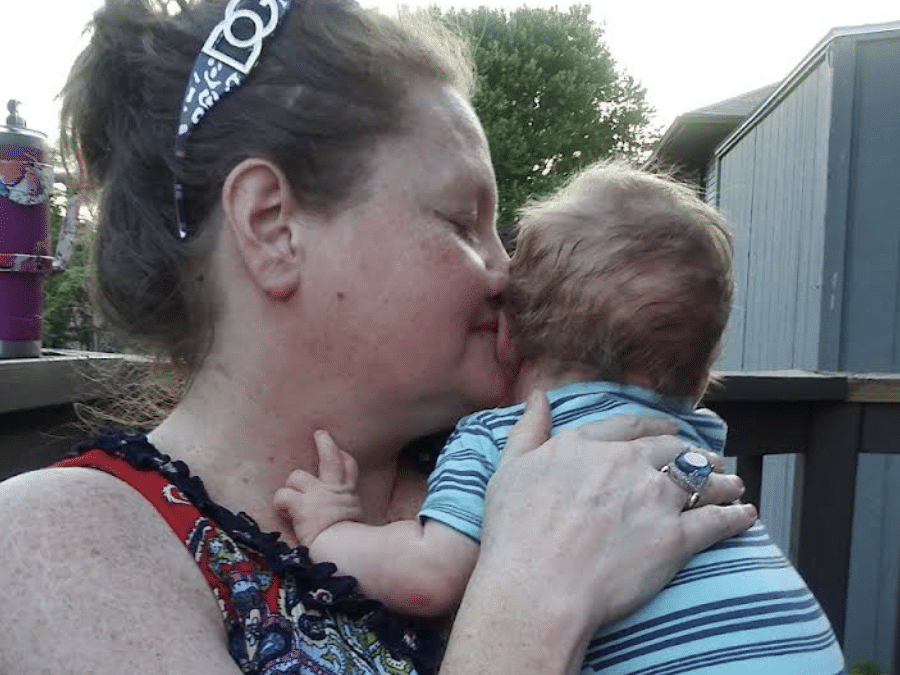
A Transplant Becomes an Opportunity for Regained Sight
“I wanted to make sure that the transplant would be a success,” said Karie. “I took it very seriously. I didn’t want to take someone’s cornea and have it not work.”
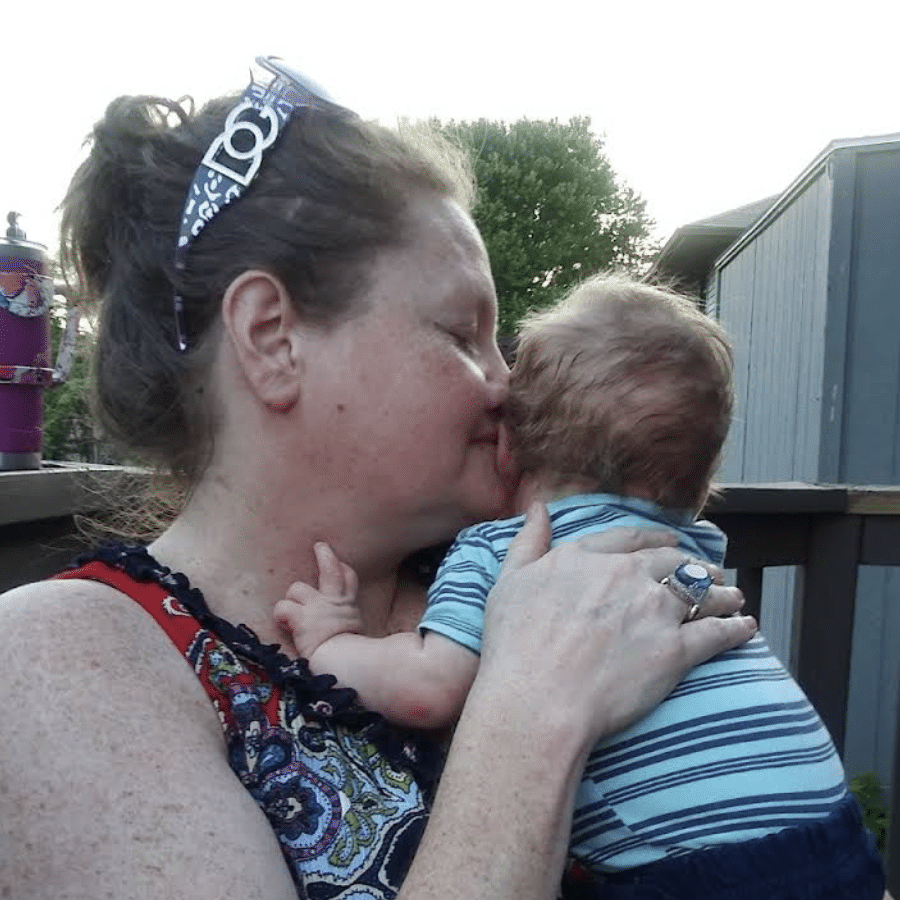
Regained sight has brought so many opportunities for Karie to celebrate with her growing family.
In December 2022, Karie received the gift of a corneal transplant. She recognizes the ultimate gift that was made by a donor had special meaning for her.
“I know that it has to be very hard to lose a family member at all, especially at the holiday,” said Karie. “I would like to do something in this person’s honor. Go somewhere, see something, eat something they liked, or do something they did.”
Post-transplant, Karie’s experienced so many improvements in her sight and quality of life. She is growing closer to driving again and now very infrequently uses a mobility cane for assistance.
“I could see some kinds of shapes and colors, but I could never really figure out what it was,” said Karie. “Now I have peripheral vision again, and they think I may be back to eventually to 20/20 vision.”
Perhaps most importantly, Karie is looking forward to seeing the face of her first-born grandchild this November. Clear vision to see his face and enjoy the sights of a newborn will be priceless for Karie and her family.
Charitable Grants Secure Saving Sight’s Legacy of Giving
In 1960, Saving Sight began restoring sight through charitable vision programs, matching the needs of local communities with a spirit of giving. While our program delivery has changed throughout that history, our legacy of giving continues to grow through our mission partners.
In 2021, Saving Sight’s board of directors established a board-designated quasi-endowment fund to support grants given to charitable organizations with a similar mission. During the first round of funding in 2021, three organizations were invited to apply: KidSight, Mid-South Lions Sight and Hearing Service, Inc., and the ShowMe Eyeglass Recycling Program. Each group received funding from Saving Sight to expand their services and impact in the community.
KidSight, a program with a historical tie to Saving Sight, received the most funding, utilizing a $35,000 gift for general operating support to screen over 39,000 Missouri children for potential vision disorders. Of those children screened, 3,500 were identified to be at risk for problems like amblyopia. As part of their essential work, the KidSight team has established an enhanced follow-up process, helping families seek vision care for children as necessary.
Saving Sight also granted $15,000 in funding to the ShowMe Eyeglass Recycling Program, a nonprofit run by the Lions Clubs of District 26 M-7. This Missouri-based program serves as a collection point for recycled eyeglasses that are then read and sorted for use in medical mission trips worldwide. With grant funding, the group purchased two lensometers to read eyeglass prescriptions, a crucial part of preparing the donated glasses to go abroad. The Lions estimate that with this equipment purchase, they were able to serve 25,000 additional people worldwide.
Finally, Saving Sight granted $10,000 in funding to Mid-South Lions Sight and Hearing Services, a nonprofit out of Tennessee that provides medical services for needy vision-impaired people in our region. With funding from Saving Sight, the organization provided direct care to 16 patients from Missouri for various eye care and surgical costs. Upon reviewing reports from these three organizations, Saving Sight’s board of directors voted to renew grants in June 2023, adding one additional nonprofit to the mix. The following grants were made at the end of this fiscal year:
- KidSight – $43,000
- ShowMe Lions Eyeglass Recycling – $5,000
- Mid-South Lions Sight and Hearing Services – $5,000
- Missouri Lions Eye Mission Program – $7,000
Business Development Department Highlight
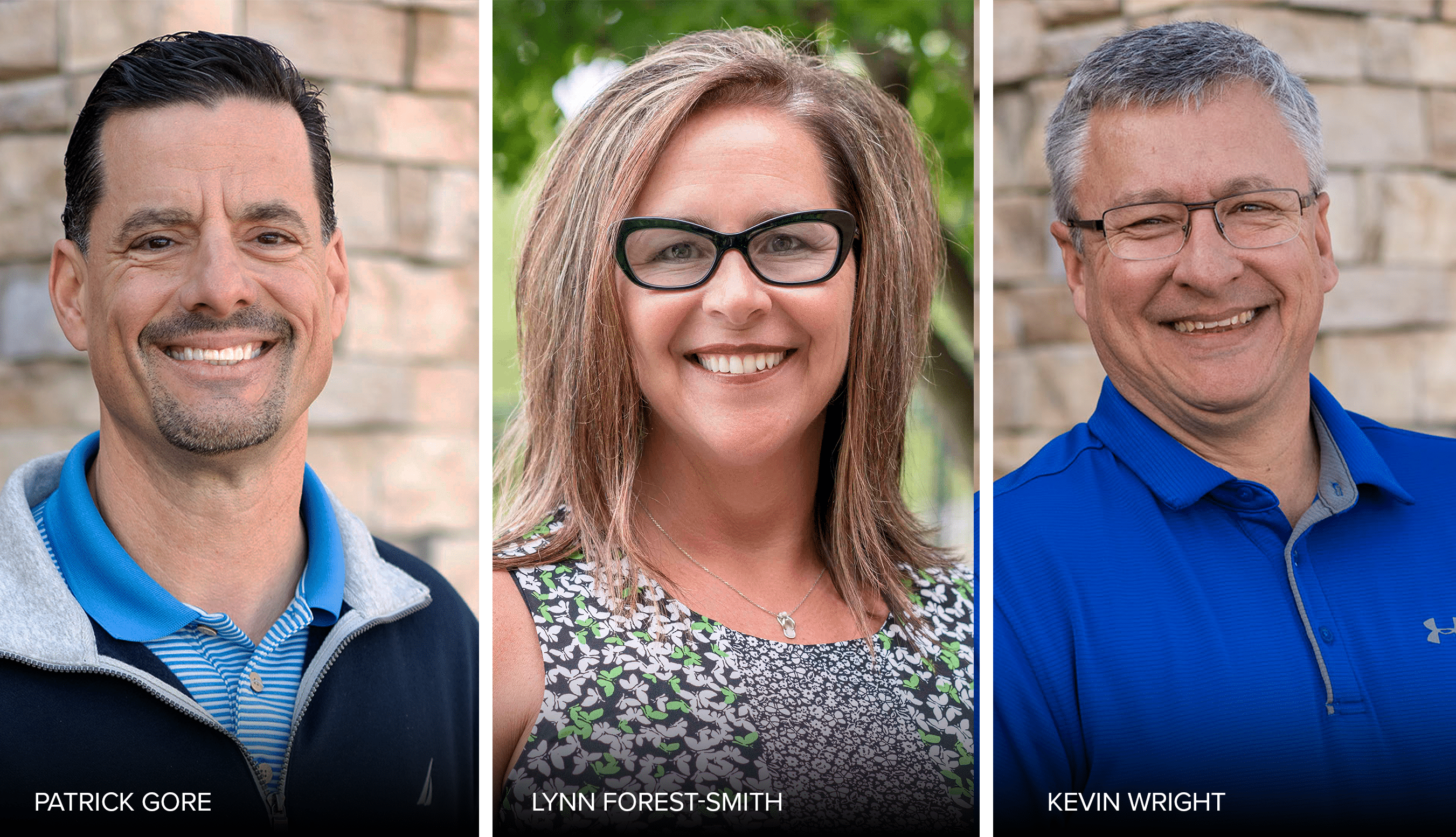 At Saving Sight, the Business Development Department is responsible for driving growth and creating new business opportunities for the organization. With its focus on both existing and new customers, the department plays a vital role in expanding the organization’s reach and impact in the field of cornea donation and transplantation. The department’s responsibilities include building and maintaining strong relationships with surgeons and stakeholders, identifying growth potential with existing customers, and recruiting new surgeons. By prioritizing both the acquisition and retention of surgeons, the team ensures a steady stream of business and works towards Saving Sight’s mission of changing lives by saving sight.
At Saving Sight, the Business Development Department is responsible for driving growth and creating new business opportunities for the organization. With its focus on both existing and new customers, the department plays a vital role in expanding the organization’s reach and impact in the field of cornea donation and transplantation. The department’s responsibilities include building and maintaining strong relationships with surgeons and stakeholders, identifying growth potential with existing customers, and recruiting new surgeons. By prioritizing both the acquisition and retention of surgeons, the team ensures a steady stream of business and works towards Saving Sight’s mission of changing lives by saving sight.
The Business Development Department consists of three members: Patrick Gore, Lynn Forest-Smith, and Kevin Wright. They work collaboratively to develop working relationships with surgeons, analyze business opportunities, conduct market research, and provide training and education to physicians, technicians, and support staff. In addition, they actively engage with university programs to foster strong relationships and participate in industry conferences to stay updated on innovation and best practices.
The team spends time visiting physicians, attending meetings, and conducting research to ensure they are well-prepared for discussions with doctors. Education is also a significant aspect of their work, as they stay informed about advancements in ophthalmology to better support their physician partners. The work of the Business Development Department is crucial to the success of Saving Sight. By serving as effective liaisons between the organization and its external stakeholders, they ensure collaboration and build lasting relationships with surgeons. Their role requires innovation and adaptability to stay relevant and competitive in a constantly changing market
Looking ahead, the department is excited about upcoming projects and events that aim to meet customer needs and further the organization’s mission. One notable project is the development of a Continuing Education (CE) program for nurses and surgery center staff. This online program will provide CE credits and simplify the process for staff to fulfill their educational requirements, elevating Saving Sight to new heights in eye banking.
Overall, the Business Development Department plays a vital role in driving growth and creating opportunities for both Saving Sight and Vital Tears. Through their dedicated efforts, they establish and nurture relationships with surgeons, identify new business avenues, and ensure the organization remains competitive and impactful in the field of cornea donation and transplantation.
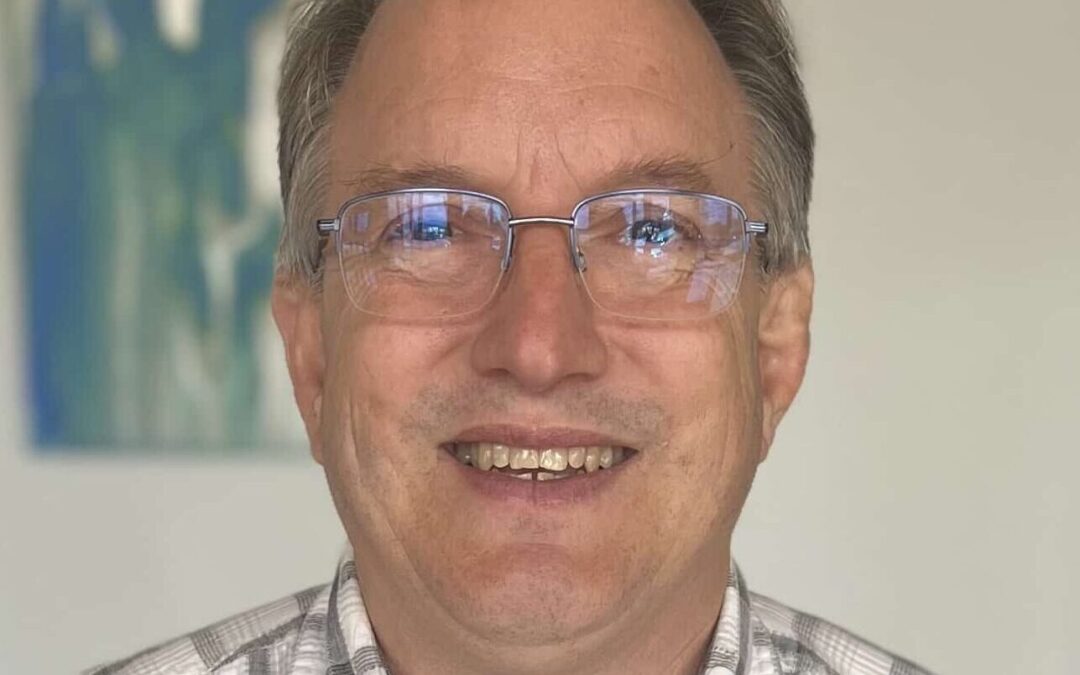
Neal’s Restored Vision Provides New Clarity
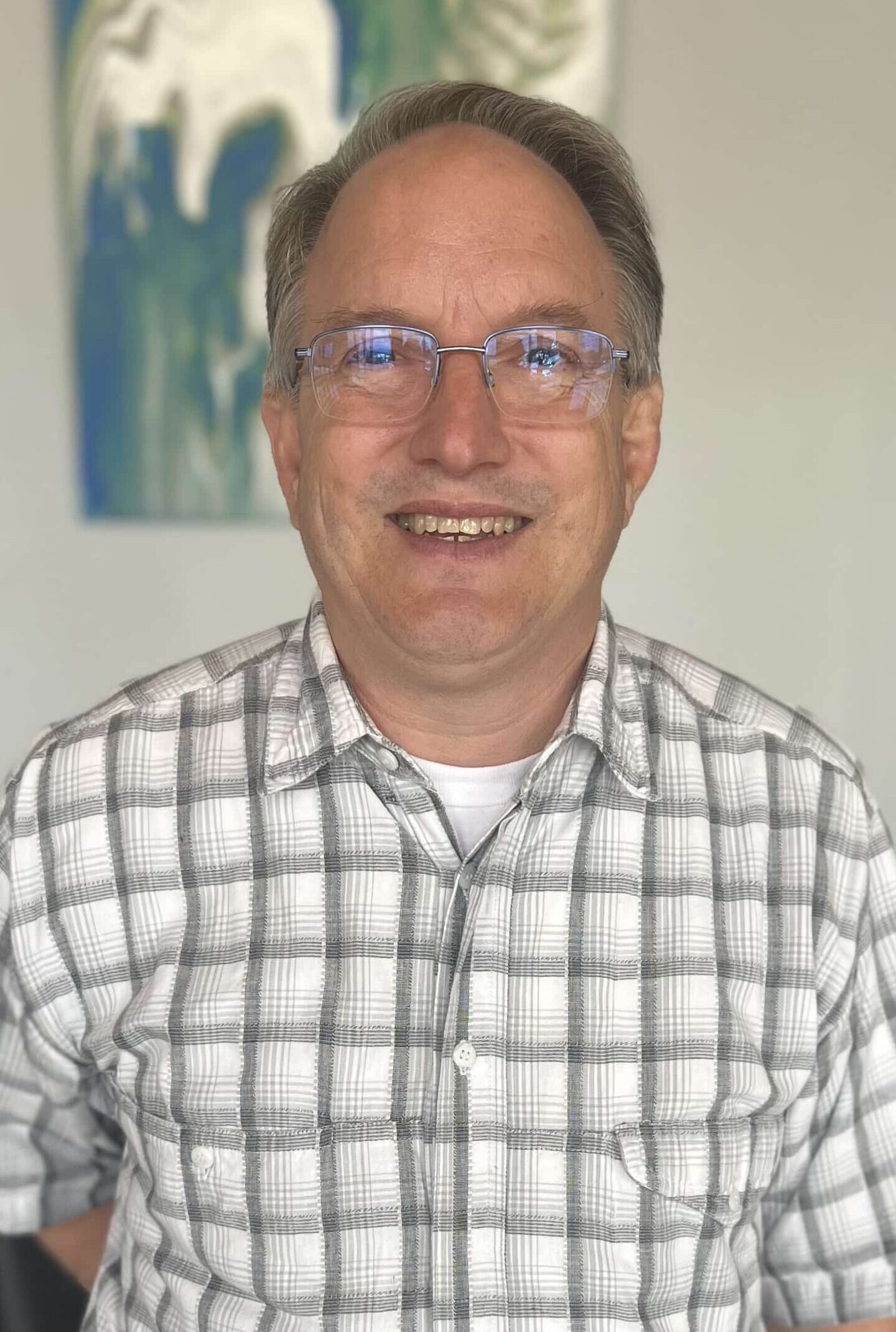 Neal’s life took a transformative turn in April 2022 when he underwent a corneal transplant, bringing newfound hope and clarity to his world. Neal, a resident of Kansas City, suffered from Fuchs Dystrophy, a progressive eye condition that clouded his vision and limited his ability to perform daily tasks. However, the transplant changed everything.
Neal’s life took a transformative turn in April 2022 when he underwent a corneal transplant, bringing newfound hope and clarity to his world. Neal, a resident of Kansas City, suffered from Fuchs Dystrophy, a progressive eye condition that clouded his vision and limited his ability to perform daily tasks. However, the transplant changed everything.
Before the surgery, Neal’s vision was gradually deteriorating, making it increasingly challenging for him to carry out his work supporting his local parish. Since the transplant, Neal’s life has been transformed. He can now see with clarity. The transplant has restored not only his vision but also his independence and livelihood.
Neal’s journey is a testament to the power of medical advancements and the generosity of eye donors and their families. The cornea transplant not only restored his sight but also granted him the opportunity to continue doing what he loves.
Get the Latest in Your Inbox
Sign up below to receive Saving Sight’s quarterly round-up of industry news straight to your inbox. We will never share your information with third parties and you may unsubscribe at any time.

